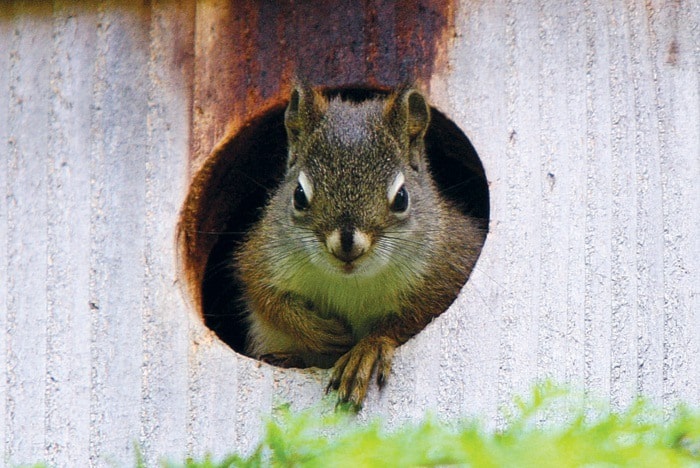Consider yourself among the fortunate few if you see a small red squirrel scurrying about the woodlands or nature areas, for their days on Vancouver Island may be limited.
The wild Red Squirrel (Tamiasciurus hudsonicus) – our Island’s only squirrel native, is now in a fight for survival with the introduced Gray Squirrel (Sciurus carolinensis).
In a 1999 study: “Potential consequences of the Eastern Gray Squirrel introduction on Vancouver Island,” Bruemmer discusses how the species, native to eastern North America, has been introduced throughout southern Vancouver Island, where they appear to be spreading north and increasing in population. This is of great concern, considering the gray squirrel’s effect in Europe.
When the ‘grays’ were introduced into Britain, Ireland, and Italy, in all three countries, they spread and replaced the native European red squirrel.
Smaller by half, the ‘red’ squirrel, averaging only 230 grams, must now expend energy to defend its territory against the ‘gray’ which continues a troubling northward expansion on Vancouver Island.
Our wild squirrel has reddish to reddish-gray fur on top and pale or white undersides, with a distinctive white ring circling the eyes. Curved front claws and strong hind legs make it a superb climber, although its tail isn’t as thick or lengthy as that of the “gray.”
While fighting off competition from “grays,” our native “red” – with a lifespan of only two to eight years – must also ward off prey, including owls, hawks, crows, marten and weasel.
The Red Squirrel – a forest dweller – is protected as a furbearer under the B.C. Wildlife Act (Yellow-listed). There are 25 recognized subspecies of red squirrels worldwide.
E-mail Christine at: wildernesswest@shaw.ca
